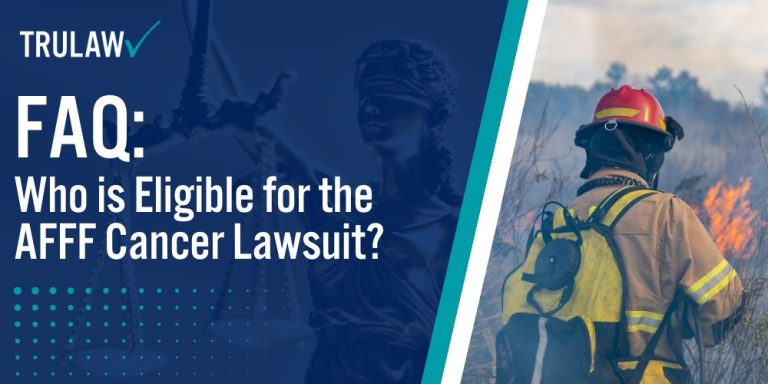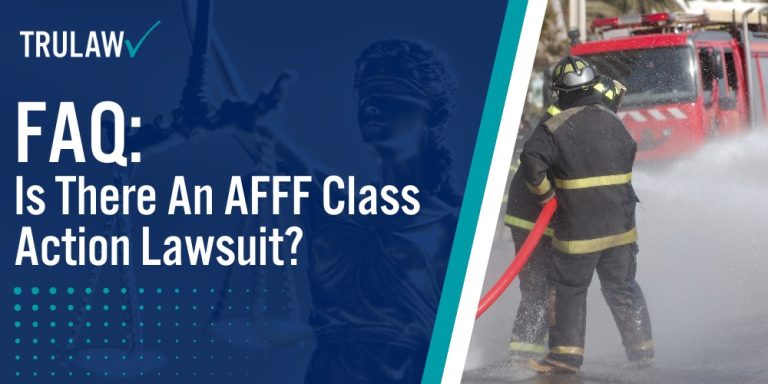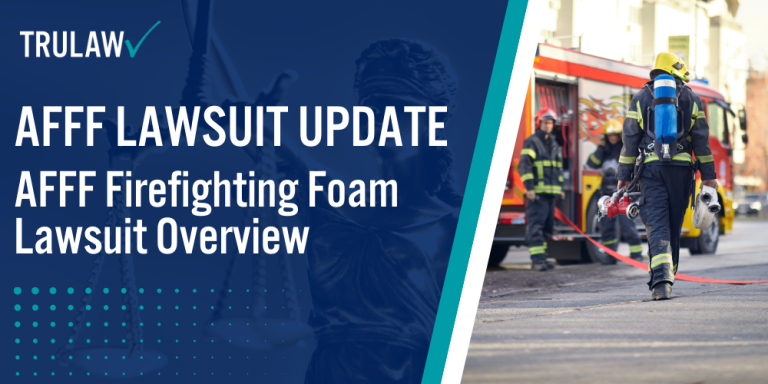AFFF Multiple Myeloma Lawsuit
- Last Updated: April 14th, 2025

Attorney Jessica Paluch-Hoerman, founder of TruLaw, has over 28 years of experience as a personal injury and mass tort attorney, and previously worked as an international tax attorney at Deloitte. Jessie collaborates with attorneys nationwide — enabling her to share reliable, up-to-date legal information with our readers.
Legally Reviewed
This article has been written and reviewed for legal accuracy and clarity by the team of writers and legal experts at TruLaw and is as accurate as possible. This content should not be taken as legal advice from an attorney. If you would like to learn more about our owner and experienced injury lawyer, Jessie Paluch, you can do so here.
Fact-Checked
TruLaw does everything possible to make sure the information in this article is up to date and accurate. If you need specific legal advice about your case, contact us by using the chat on the bottom of this page. This article should not be taken as advice from an attorney.
Key takeaways:
- AFFF firefighting foam contains PFAS chemicals that may cause multiple myeloma, and victims are filing lawsuits for compensation.
- Eligibility to file an AFFF foam lawsuit is based on proof of exposure to the foam and a diagnosis of multiple myeloma, with legal claims needing to be filed within specific statute limitations.
- Experienced attorneys are critical for guiding individuals through the process, ensuring evidence is gathered correctly, and helping achieve fair compensation in state or federal courts.
AFFF Multiple Myeloma Lawsuit Overview
On this page, we’ll provide an overview of the AFFF Multiple Myeloma Lawsuit, projected AFFF lawsuit settlement amounts, guidance on how to file an AFFF Lawsuit, and much more.
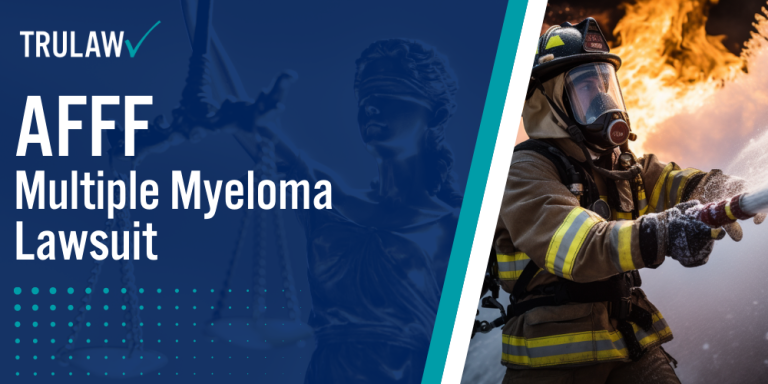
Intro to the AFFF Multiple Myeloma Lawsuits
Aqueous Film Forming Foam (AFFF) has been used since the 1960s to suppress fires fueled by liquids or gases.
However, many firefighting foams contain PFAS chemicals, known as “forever chemicals,” which have been linked to a range of cancers, including multiple myeloma, and other serious health concerns.
Although the use of AFFF has been largely phased out, many individuals may have suffered health impacts due to past exposure.
AFFF lawsuits are being filed across the country by people who have experienced health problems related to PFAS exposure.
If you or a loved one has been diagnosed with multiple myeloma, another cancer, or a related health issue, you may qualify to pursue legal action.
The firefighting foam cancer lawyers at TruLaw and our partner law firms are currently assisting clients in determining their legal options.
You can use the chat on this page to instantly check if you may qualify to file an AFFF lawsuit.
If you have questions about your potential claim or the legal process, we encourage you to reach out to learn more about how we can assist.
Table of Contents
Link Between Aqueous Film-Forming Foam (AFFF) and Multiple Myeloma Risk
Multiple myeloma is a rare cancer that affects plasma cells in the bone marrow.
Research has shown that toxic compounds in AFFF can affect cell function, increasing the risk of malignant growth in those who have endured long-term exposure (such as civilian firefighters and military firefighters).
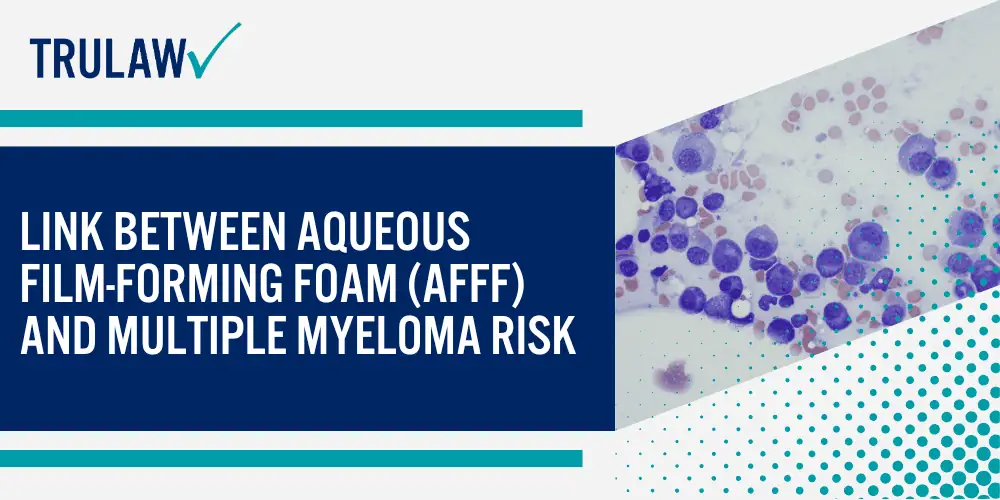
If you or a loved one were exposed to toxic firefighting foam and later developed multiple myeloma or other health problems, you may be eligible to file an AFFF lawsuit.
TruLaw is available to help you understand your options — contact us by using the chat on this page to instantly determine if you qualify for an AFFF lawsuit.
PFAS Chemicals in Firefighting Foam and Their Impact on Human Health
Chemical manufacturers and agencies such as the U.S. Navy were aware of the dangers posed by PFAS chemicals for decades.
Despite warnings from the Environmental Protection Agency, the use of AFFF firefighting foam continued for years, leading to widespread environmental contamination and serious health concerns.
Several studies have linked PFAS exposure to increased cancer risk and other serious conditions.
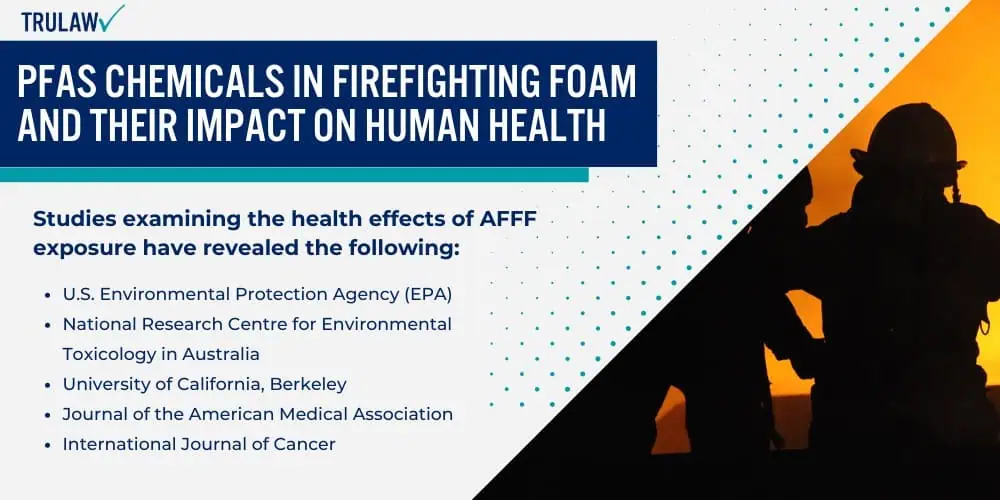
Health risks associated with PFAS exposure include:
- Prostate cancer
- Testicular cancer
- Bladder cancer
- Breast cancer
- Colorectal cancer
- Kidney cancer
- Leukemia
- Liver cancer
- Mesothelioma
- Pancreatic cancer
- Thyroid cancer
- Thyroid disease
- Ovarian cancer
- Endometrial cancer
- Potentially other health issues
Scientific Studies on PFAS Exposure and Related Health Issues
Extensive scientific research has identified links between PFAS exposure and serious health conditions.
Notable studies on the health effects of PFAS exposure include:
- University of California, Berkeley: Found that women firefighters exposed to AFFF had higher levels of PFAS chemicals compared to office workers.
- Journal of the American Medical Association: Found an association between PFOA exposure and increased risks of kidney cancer, testicular cancer, and ulcerative colitis.
- U.S. Environmental Protection Agency (EPA): Issued a health advisory cautioning against long-term exposure to PFOA and PFOS, stating that certain levels of these chemicals could pose health risks.
- International Journal of Cancer: Published research linking PFOS exposure to a higher likelihood of breast cancer.
- International Agency for Research on Cancer (IARC): Classified PFOA and PFOS as possibly carcinogenic to humans.
- National Research Centre for Environmental Toxicology (Australia): Found elevated levels of fluorinated surfactants in firefighters’ bloodstreams.
AFFF Firefighting Foam Lawsuit Explained
Lawsuits related to firefighting foam (AFFF) are being filed against the manufacturers of these products.
Plaintiffs claim that these companies failed to adequately warn about the health risks associated with AFFF exposure.
Individuals diagnosed with cancer and other health issues are seeking compensation from these firefighting foam manufacturers for their alleged negligence.
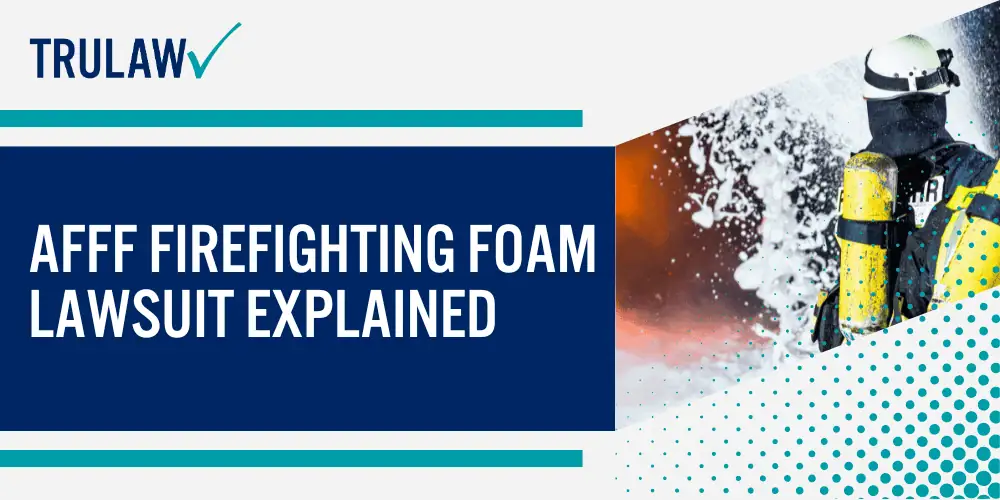
While there has yet to be a global settlement in the AFFF litigation, progress is being made, and many legal experts believe a settlement will eventually be reached.
If you or a loved one were exposed to firefighting foam and later developed cancer or other health problems, you may be eligible to pursue legal action.
Reach out to TruLaw for more information by using the chat on this page to instantly find out if you qualify to file an AFFF lawsuit.
Defendants in the AFFF Firefighting Foam Litigation
Several companies involved in the production or distribution of AFFF products are facing lawsuits related to PFAS contamination and its associated health risks.
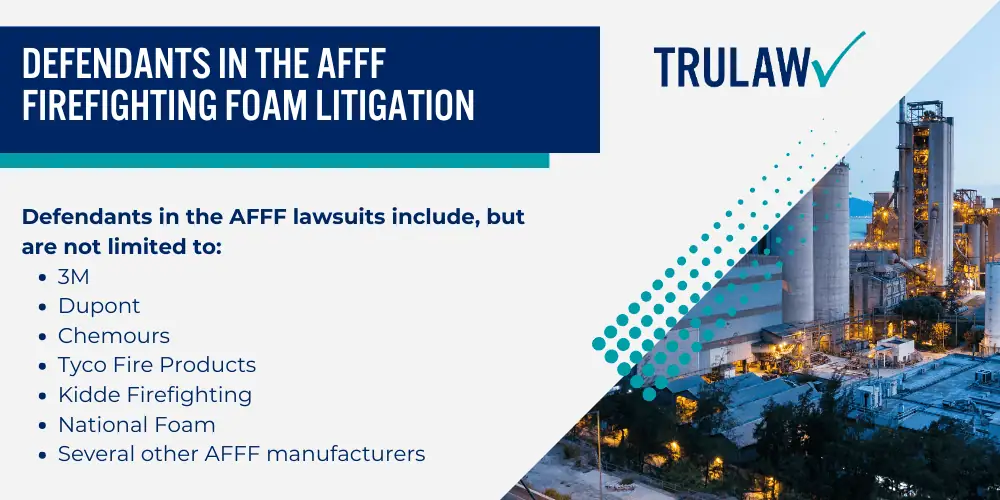
Defendants in the AFFF lawsuits include, but are not limited to:
- 3M
- Dupont
- Chemours
- Tyco Fire Products
- Kidde Firefighting
- National Foam
- Several other AFFF manufacturers
What Are the Average Settlement Amounts in Firefighting Foam Lawsuits?
No settlements have been reached in the AFFF litigation as of now.
However, projections suggest that settlements could range between $20,000 and $1,000,000 (or more), depending on the specifics of each case and other individual factors.
These figures are not guaranteed and are based on previous mass tort cases involving similar health concerns, such as cancer diagnoses.
AFFF Lawsuits Filed by Municipalities and Governments
Many states, towns, and local water agencies have joined the AFFF litigation process, seeking compensation and solutions for the contamination caused by PFAS chemicals.
PFAS compounds, known for their persistence, have polluted water supplies in numerous communities across the country.
This contamination can lead to long-term health risks, property value declines, and the need for costly water treatment.
Communities affected by PFAS-contaminated water supplies face serious challenges, including legal battles aimed at recovering damages and raising awareness about the dangers of AFFF and PFAS.
It’s important to note that TruLaw is only accepting clients with AFFF personal injury claims — we are not accepting clients for the AFFF municipal water contamination lawsuits.
Are You Eligible for an AFFF Multiple Myeloma Lawsuit?
Individuals exposed to firefighting foam may face an elevated risk of developing certain health conditions, including various types of cancer.
One of these cancers is multiple myeloma.
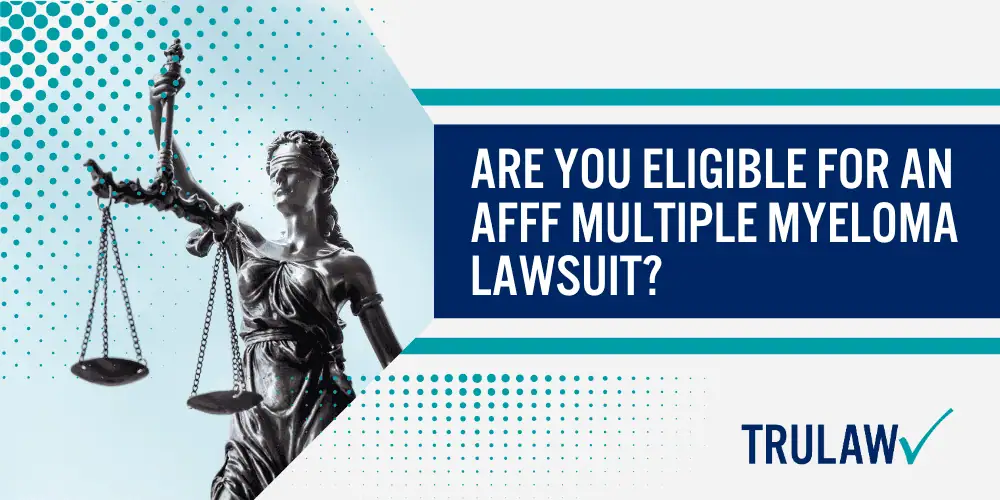
If you or a loved one were exposed to firefighting foam and later diagnosed with multiple myeloma, you may be eligible to file an AFFF lawsuit.
You can use the chatbot on this page to instantly check if you qualify for an AFFF Firefighting Foam lawsuit.
Steps to Gathering Evidence for AFFF Lawsuits
The strength of your evidence plays a key role in shaping the outcome of an AFFF lawsuit.
Working closely with your legal team to gather relevant documentation is vital to building a strong case.
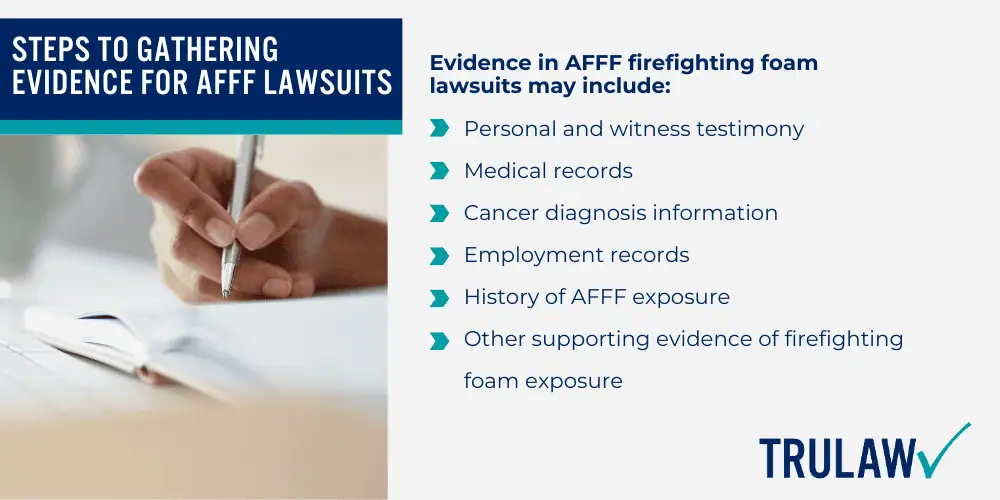
Evidence in AFFF firefighting foam lawsuits may include:
- Personal and witness testimony
- Medical records
- Cancer diagnosis information
- Employment records
- History of AFFF exposure
- Other supporting evidence of firefighting foam exposure
Compensation in Firefighting Foam Lawsuits
Damages refer to the losses you’ve incurred due to AFFF exposure.
Assessing these damages is important for determining potential compensation.
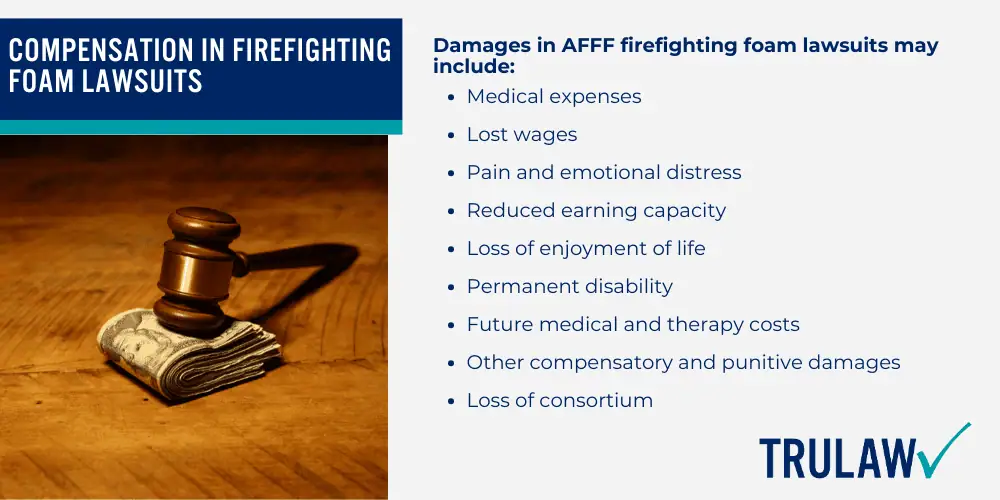
Damages in AFFF firefighting foam lawsuits may include:
- Medical expenses
- Lost wages
- Pain and emotional distress
- Reduced earning capacity
- Loss of enjoyment of life
- Permanent disability
- Future medical and therapy costs
- Other compensatory and punitive damages
- Loss of consortium
The Importance of Selecting the Right Legal Representation for Your Claim
Selecting the right attorneys for your AFFF claim is important due to the intricacies involved in these cases.
AFFF lawsuits often require knowledge of product liability and toxic exposure laws.
TruLaw and our partner law firms are dedicated to helping individuals through the legal process, ensuring that every step is handled with care.
While we have not secured specific settlements in AFFF cases, our commitment is to help clients seek fair compensation through the legal process.
We are here to guide and support you in your claim for a potential AFFF settlement.
TruLaw: Your Firefighting Foam Cancer Law Firm
The firefighting foam cancer lawyers at TruLaw and our partner law firms seek to help individuals pursue legal actions if they believe they have been harmed by Aqueous Film Forming Foam (AFFF) exposure.
Our goal is to assist in holding large corporations and chemical manufacturers accountable for the potential harm caused by these toxic chemicals.
If you or a loved one has been diagnosed with cancer or experienced adverse health effects after regular exposure to firefighting foam, you may be eligible to file an AFFF lawsuit and seek financial compensation.
Contact us today to learn more about your options by using the chatbot on this page to instantly see if you qualify to file an AFFF lawsuit.
AFFF Lawsuit Frequently Asked Questions
-
Is there an AFFF class action lawsuit?
No, there is no AFFF class action lawsuit for personal injury claims related to AFFF exposure.
AFFF lawsuits are being handled through multidistrict litigation (MDL), which is a different legal process than a class action.
While some law firms may refer to an “AFFF Class Action Lawsuit” or an “AFFF Class Action MDL,” the terms used here are incorrect in describing the structure of these legal actions.
-
What is the AFFF MDL?
Pending and ongoing AFFF lawsuits are being consolidated into multidistrict litigation (MDL).
MDL is a federal legal process designed to simplify and expedite cases with similar facts and legal claims by consolidating them into a single district court.
This approach helps ensure consistent rulings and allows cases to proceed more efficiently.
The AFFF firefighting foam MDL is centralized in the US District Court for the District of South Carolina.
In the event of a settlement, compensation would be based on the specific facts and circumstances of each case, unlike class actions where settlement amounts are distributed evenly among all claimants, regardless of individual factors.
-
What is the average AFFF lawsuit settlement?
As of now, there have been no settlements in the AFFF firefighting foam cases.
However, experienced firefighting foam lawyers estimate that individual AFFF lawsuit settlement amounts could range from $20,000 and $1,000,000 (or more), depending on the specifics of each case.
These are only projections based on previous mass tort cases and are not guaranteed amounts of compensation in the AFFF foam lawsuit.
For more personalized insight, contact an AFFF attorney to discuss the details of your potential claim and what to expect.
-
What should I expect during the AFFF MDL process?
The MDL process typically involves gathering evidence, negotiating with defendants, and preparing for litigation if necessary.
Throughout this process, your AFFF lawyers will keep you informed and guide you through each step, ensuring that you understand the progress of your case and what comes next.

Managing Attorney & Owner
With over 25 years of legal experience, Jessica Paluch-Hoerman is an Illinois lawyer, a CPA, and a mother of three. She spent the first decade of her career working as an international tax attorney at Deloitte.
In 2009, Jessie co-founded her own law firm with her husband – which has scaled to over 30 employees since its conception.
In 2016, Jessie founded TruLaw, which allows her to collaborate with attorneys and legal experts across the United States on a daily basis. This hypervaluable network of experts is what enables her to share the most reliable, accurate, and up-to-date legal information with our readers!
You can learn more about the AFFF Lawsuit by visiting any of our pages listed below:
Here, at TruLaw, we’re committed to helping victims get the justice they deserve.
Alongside our partner law firms, we have successfully collected over $3 Billion in verdicts and settlements on behalf of injured individuals.
Would you like our help?
At TruLaw, we fiercely combat corporations that endanger individuals’ well-being. If you’ve suffered injuries and believe these well-funded entities should be held accountable, we’re here for you.
With TruLaw, you gain access to successful and seasoned lawyers who maximize your chances of success. Our lawyers invest in you—they do not receive a dime until your lawsuit reaches a successful resolution!
AFFF Lawsuit claims are being filed against manufacturers of aqueous film-forming foam (AFFF), commonly used in firefighting.
Claims allege that companies such as 3M, DuPont, and Tyco Fire Products failed to adequately warn users about the potential dangers of AFFF exposure — including increased risks of various cancers and diseases.
Depo Provera Lawsuit claims are being filed by individuals who allege they developed meningioma (a type of brain tumor) after receiving Depo-Provera birth control injections.
A 2024 study found that women using Depo-Provera for at least 1 year are five times more likely to develop meningioma brain tumors compared to those not using the drug.
Suboxone Tooth Decay Lawsuit claims are being filed against Indivior, the manufacturer of Suboxone, a medication used to treat opioid addiction.
Claims allege that Indivior failed to adequately warn users about the potential dangers of severe tooth decay and dental injuries associated with Suboxone’s sublingual film version.
Social Media Harm Lawsuits are being filed against social media companies for allegedly causing mental health issues in children and teens.
Claims allege that companies like Meta, Google, ByteDance, and Snap designed addictive platforms that led to anxiety, depression, and other mental health issues without adequately warning users or parents.
Transvaginal Mesh Lawsuits are being filed against manufacturers of transvaginal mesh products used to treat pelvic organ prolapse (POP) and stress urinary incontinence (SUI).
Claims allege that companies like Ethicon, C.R. Bard, and Boston Scientific failed to adequately warn about potential dangers — including erosion, pain, and infection.
Bair Hugger Warming Blanket Lawsuits involve claims against 3M — alleging their surgical warming blankets caused severe infections and complications (particularly in hip and knee replacement surgeries).
Plaintiffs claim 3M failed to warn about potential risks — despite knowing about increased risk of deep joint infections since 2011.
Baby Formula NEC Lawsuit claims are being filed against manufacturers of cow’s milk-based baby formula products.
Claims allege that companies like Abbott Laboratories (Similac) and Mead Johnson & Company (Enfamil) failed to warn about the increased risk of necrotizing enterocolitis (NEC) in premature infants.
Here, at TruLaw, we’re committed to helping victims get the justice they deserve.
Alongside our partner law firms, we have successfully collected over $3 Billion in verdicts and settlements on behalf of injured individuals.
Would you like our help?
